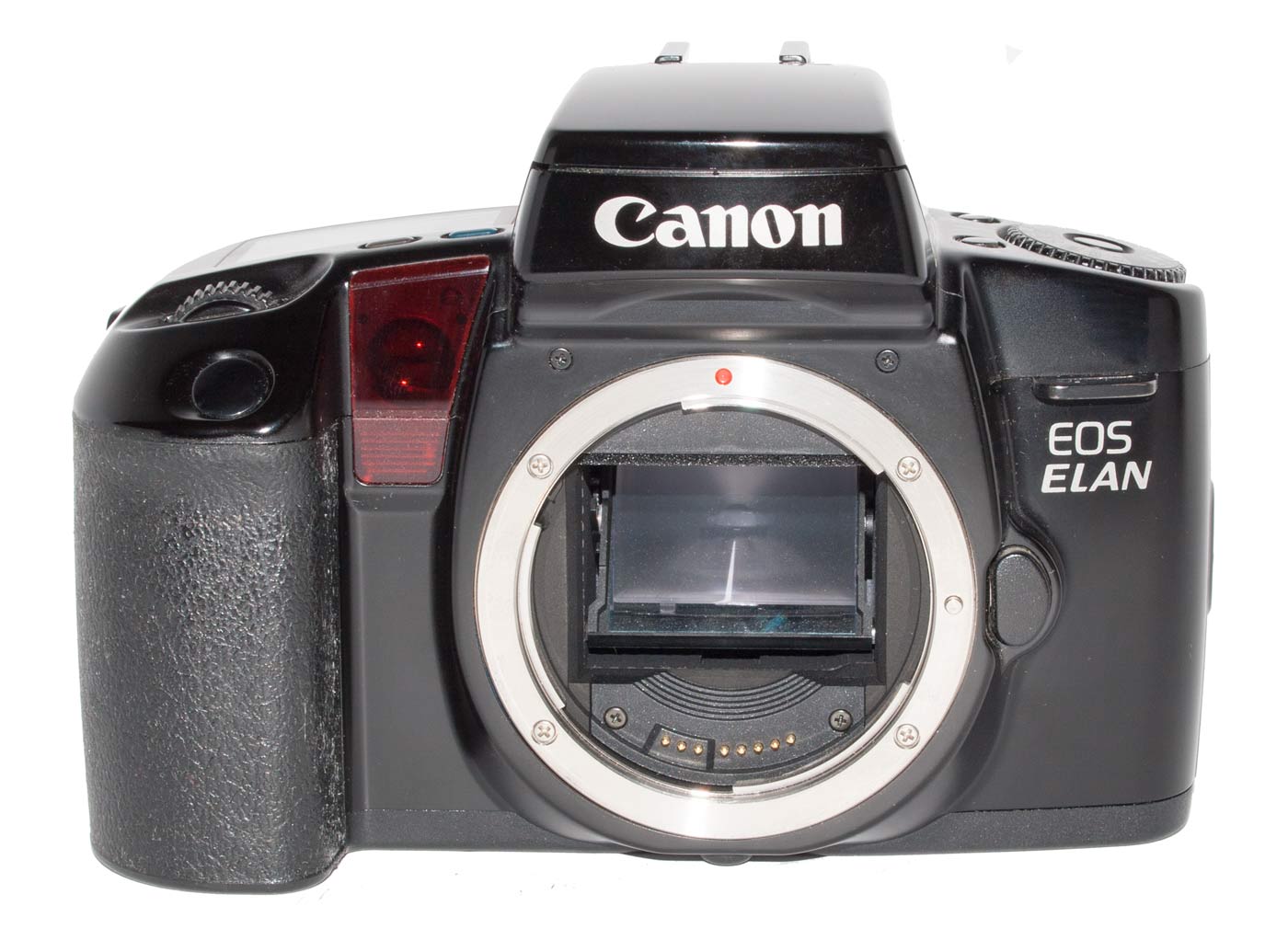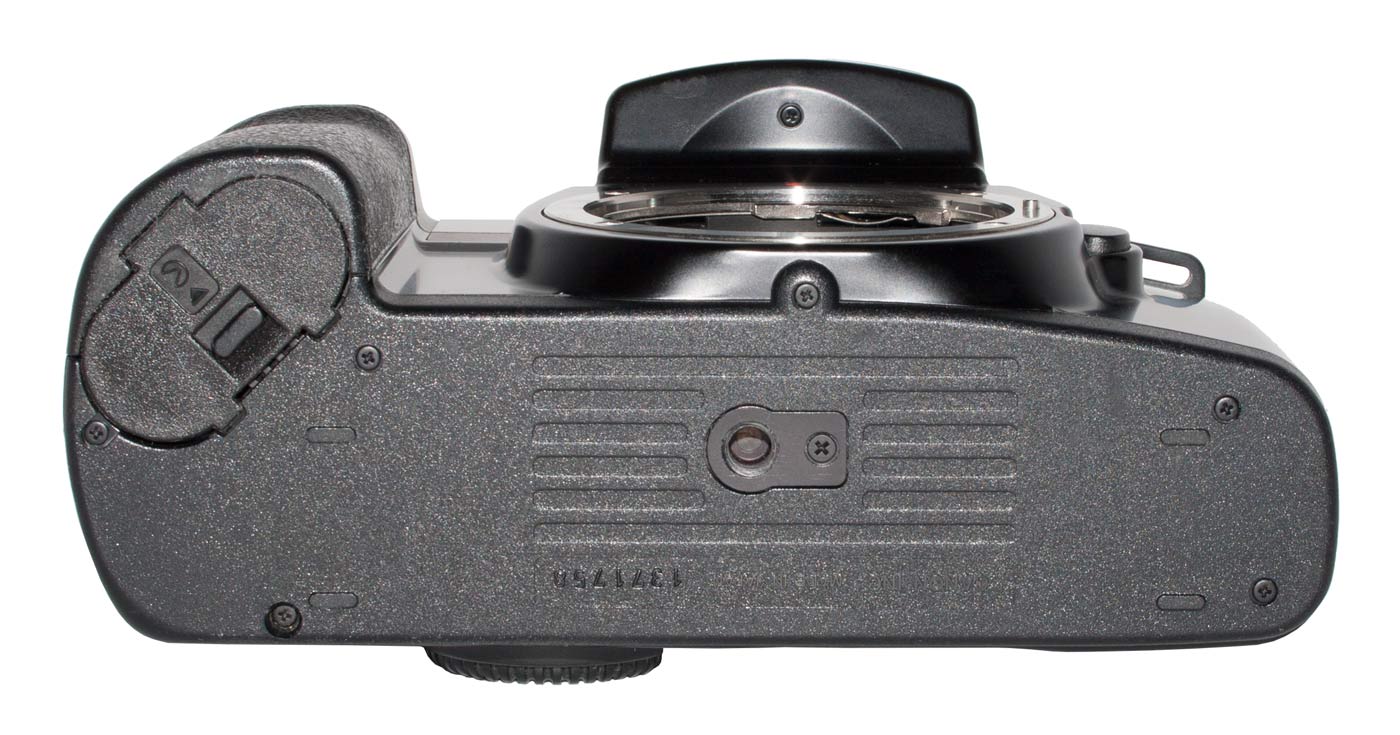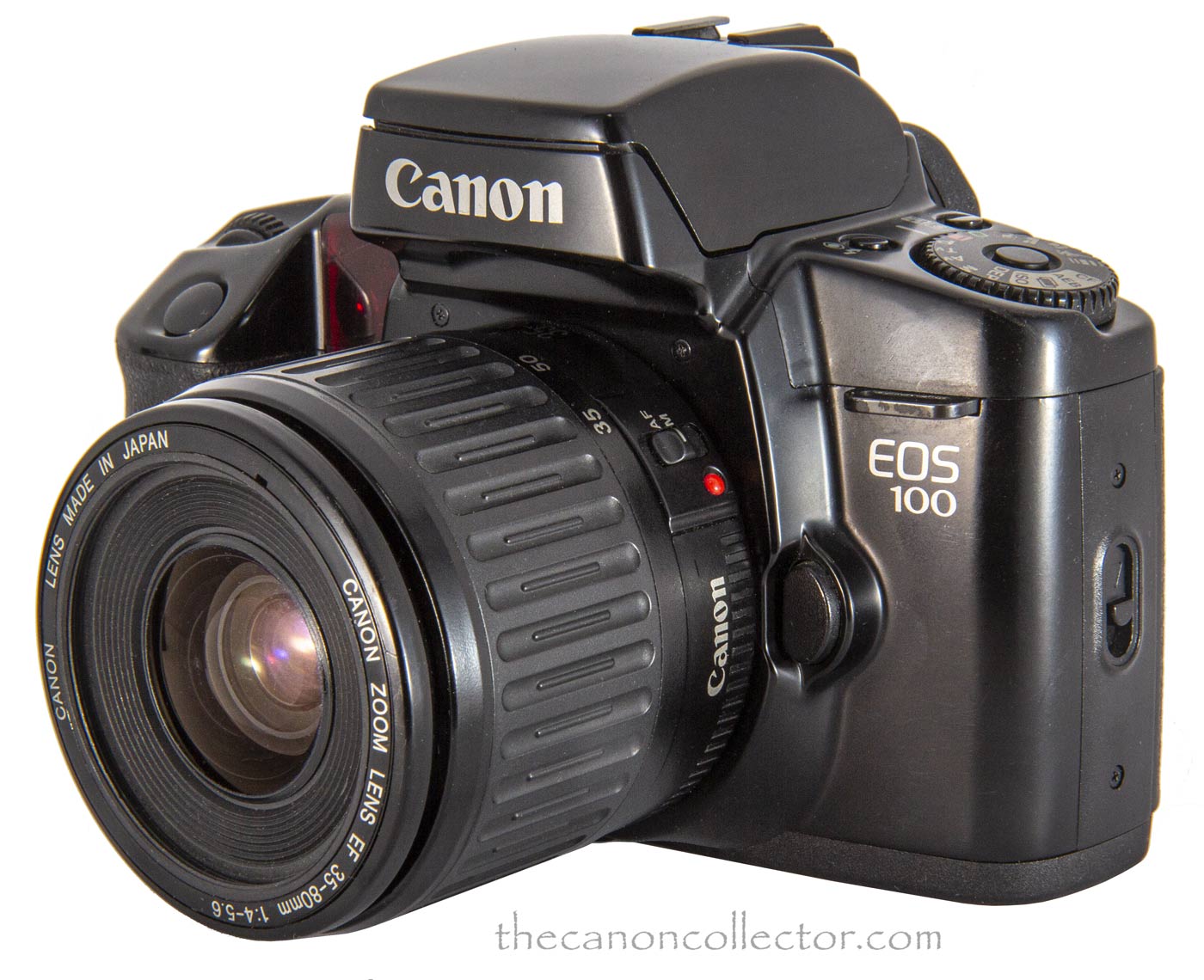Although rooted firmly in the film era the EOS Elan has the appearance of a modern DSLR.
The Command Dial on the left side of the top deck shoiuld be familiar to any DSLR user today. On the right is a large LCD screen that displays the camera settings.
Popular Photography of January 1993 carried this advertizement for the Elan camera as part of Canon’s marketing campaign. Notice the emphasis on how quiet the camera is.
EOS Elan
When I began collecting Canon
cameras the sheer number of
models was almost overwhelming!
But after several years of collecting
the cameras are starting to make
some sense.
One aid to understanding was to
place cameras in various series
and then to break down that
series into sub-series and place the
camera within that sub-series. That
way each camera sits in a context that frames it and makes understanding its
place easier.
For instance look at the Elan. First we place it in a series: it is an EOS Film Camera. Then we can place it on the EOS Film Camera Chart where we find it listed as an Enthusiast camera positioned between the EOS 630 and the Elan II. And if you look, at the
same time the Elan was being marketed, the next camera up in sophistication was
the EOS 10 and later the EOS 5.
When the Elan entered the market
Canon’s entry level camera was the
original Rebel which was followed
by the Rebel II. You see? Now the
Elan has context.
It was introduced in August of 1991.
In Europe it was the EOS 100. In Japan
it was the EOS 100 QD or the EOS
Panorama. The Elan was an outgrowth
of the EOS 630 but with some interesting additional features.
This Brochure for the Elan camera and System explains the features of this camera and the accessories for it. It is worth a study.
As with the E)S 630, the Elan had a vertical travelling metal shutter with speeds of 30 seconds to 1/4000th. Selectable film speeds were ISO 6 to 6400. It had 5 full auto modes as well as Av, Tv and Manual. Exposure compensation of plus or minus 2 stops could be selected as well as Auto Exposure Bracketing (AEB) of plus or minus 2 stops in 1/2 stop increments. So far it all sounds like the EOS 630. In fact it sounds like my 60D. Which brings up the next comments: sound.
Canon promoted the Elan as the silent camera. They changed some metal gears for compound fibre ones and others with neoprene drive belts making for a much quieter camera. When you fire this camera with film in it you hear the mirror slap up for the exposure but you don’t hear the film wind or the shutter. These sounds are submerged in the sound of the mirror which is not loud. It is a considerable improvement on previous models.
Of course there are other features we could discuss but they are all listed in the Canon brochure on the left. That will give you the total picture.
The red window on the left in this image is the IR AF Light Emitter which projects IR light onto the subject on which the camera can focus in low light conditions. It is also the self timer function indicator light.
The Elan has a pop-up flash, which can be selected as desired. This flash will focus the beam depending on the focal length setting of the lens.
On the back of the camera is the new Quick Control Dial. On this camera it has a limited function but on future cameras it will grow to become an essential control device. Check the Manual for its use.
The camera’s power is drawn from a single 2CR5 battery which loads thru the door on the camera bottom.
With the back open the vertical travel shutter is visible. The layout is standard for a late model film camera.
In low light or low contrast situations a red auto focus assist light briefly illuminates the scene while the camera focuses.
Film loading is very easy. One merely places the film leader across the film plane and closes the door. That’s it. Film advance is almost silent.
The viewfinder shows basic settings along the bottom of the window when the shutter button is pressed half way.
The built in flash actually adjusts automatically for three focal lengths, 28mm, 50mm and 80mm which the camera senses automatically. It then focuses the beam appropriately for the focal length. There is a grip available, the GR-70, but it is only a grip and offers no battery capacity or added controls. Two speedlites were designated for the Elan, the 430EZ and the 300EZ.
This camera was usually sold sold with the EF 28-80mm f/3.5-5.6 zoom lens as the “kit” lens.
Canon Bar Code Reader E
The Bar Code Reader is an interesting device that is compatible with the EOS 10, EOS 10S, EOS 10QD, EOS 100, EOS 100QD, EOS 100 Panorama and EOS Elan (original) cameras. It was a device that was really not that useful given how automatic cameras were becoming..
The Bar Code Reader is a small plastic device that can scan and store a bar code contained in the booklet that comes with the device. There are dozens of photographic scenarios in the booklet with examples and each has a bar code associated with it.
The user selects the type of photo he is trying to take and then the pointed end of the Reader is dragged across the bar code.
Once the reading is taken the other end of the Reader is placed against a sensor port on the camera and the code is read into the camera. The camera then sets itself to the mode most suitable to that bar code and the user proceeds to take his picture.
Publication C-II-168 (1990)
This is a booklet of Instructions and Bar Codes that came with the Canon Bar-Code Reader E
This is the right edge of the Elan showing the sensor port for receiving bar code information. The Elan Command Dial on the top of the body is turned to the Bar Code setting and the Reader is held against the sensor port. Then the transmission button on the Reader is pressed and the reading transmitted to the camera. See page 24 of the Camera Instruction Manual for full instructions. The EOS Photo Files Booklet also contains instructions for the Readers use.
The Bar Code Reader is pointed at one end. This is where the sensor is to read the bar codes. The other end is blunt and has a window that fits against the sensor port on the camera for transmission of the reading to the camera. The Reader also has a pocket clip and the leather case can be attached to the thin Canon camera strap. The only control on the device is the single button shown. The reader takes two CR2025 batteries to power it. This was never a popular device and was limited basically to models of the EOS 10 and the EOS 100 cameras. It was probably rendered uneccessary because cameras were becoming so automatic and so easy to use.
As with other Canon cameras the Elan was marketed under different names across the world. In Europe and Asia it was called the EOS 100. The 100 is the exact same camera as the Elan and is described above.
In Japan Canon frequently offered slightly more advanced cameras to the home market. In this case the Elan in Japan was the EOS 100 QD and the EOS 100 Panorama.
The Elan did not have a removable back so it was not possible to install a data back. In Japan the Elan was available with the data back installed. This was the EOS 100 QD (Quartz Date).
The EOS 100 Panorama is equipped with the Panorama feature which was not very impressive. Moving a switch pops out a small shutter top and bottom to cover a portion of the film plane leaving an exposed area on the film that is apparently wider. But in reality it is not.
The exposed area is still the width of the standard 35mm frame. Just the top and bottom are cut off. All that happens is that some of the film is not exposed. Why? Expose the whole frame and crop it in post processing for heaven’s sake! That way you keep your options open.
So there you have it: the Elans. These are great cameras and a pleasure to shoot. Both my Elan and my EOS 100 are in great condition and I have run film through both of them Shooting with them is very much like using a digital camera. The features remind me of my Rebel XTi. Except there is no LCD screen on the back to review your shots. But I keep looking for it with every exposure. Habit is an amazing thing!
This website is the work of R. Flynn Marr who is solely responsible for its contents which are subject to his claim of copyright. User Manuals, Brochures and Advertising Materials of Canon and other manufacturers available on this site are subject to the copyright claims and are the property of Canon and other manufacturers and they are offered here for personal use only.




















